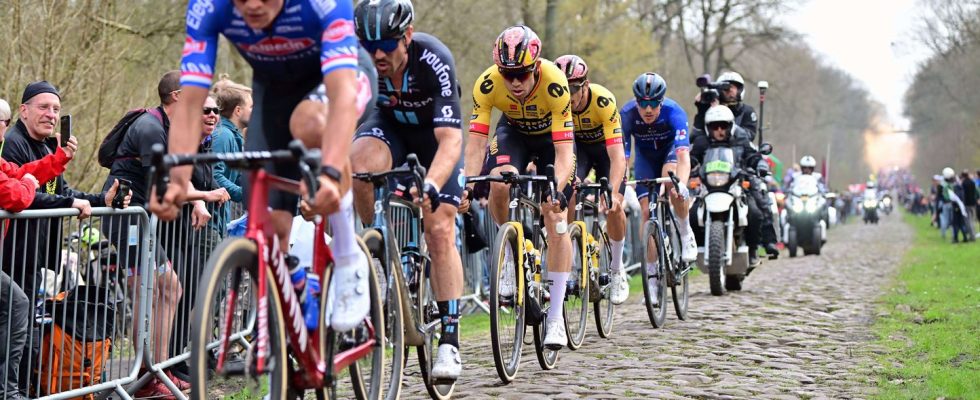Barely installed, already criticized. Several personalities from the world of cycling have expressed concern about the installation of a chicane at the entrance to the legendary Arenberg gap in Paris – Roubaix. The initiative was validated on Wednesday by the prefecture and immediately installed in order to reduce the entry speed of the peloton on this paved sector, and thus reduce the risk of falling.
After passing the railway line, just before the paved sector, the runners will “go around the island to approach the gap at a speed of around 25 km/h”, compared to more than double usually, explained Thierry Gouvenou, the race director.
“It can’t pass without falling”
It is an understatement to say that this arrangement is the subject of debate in the peloton. Because if the basic idea is good, its implementation raises questions. The second turn of the chicane, in particular, is a hairpin which could well cause major damage. “As it’s gone there, it’s a U-turn on the road. So instead of it falling on the cobblestones, it will fall before, estimates for example the manager of Groupama-FDJ Marc Madiot In The Team this Thursday. We are on a hairpin where the guys will arrive at 50 per hour, the first will try to pass, if there is one who misses, there will be 80 in the same situation. It can’t pass without falling, for me. »
The Dutchman Mathieu Van der Poel, arch favorite for the race on Sunday after his resounding victory in the Tour of Flanders last weekend, is not a fan at all. “It’s a joke,” he asked on his social networks, reposting the video of the already famous chicane.
Thierry Gouvenou recognizes that the solution is not ideal. “I wrote to the riders that it could cause problems, in particular because there would be more braking. They told me: we prefer to brake hard at the risk of falling on tarmac rather than entering the Arenberg gap at 65 km/h,” he told AFP. For him, this arrangement of the course was “the best solution within the time limit”. He will take the time, with his teams, to think about “a more fluid system in the long term”.

